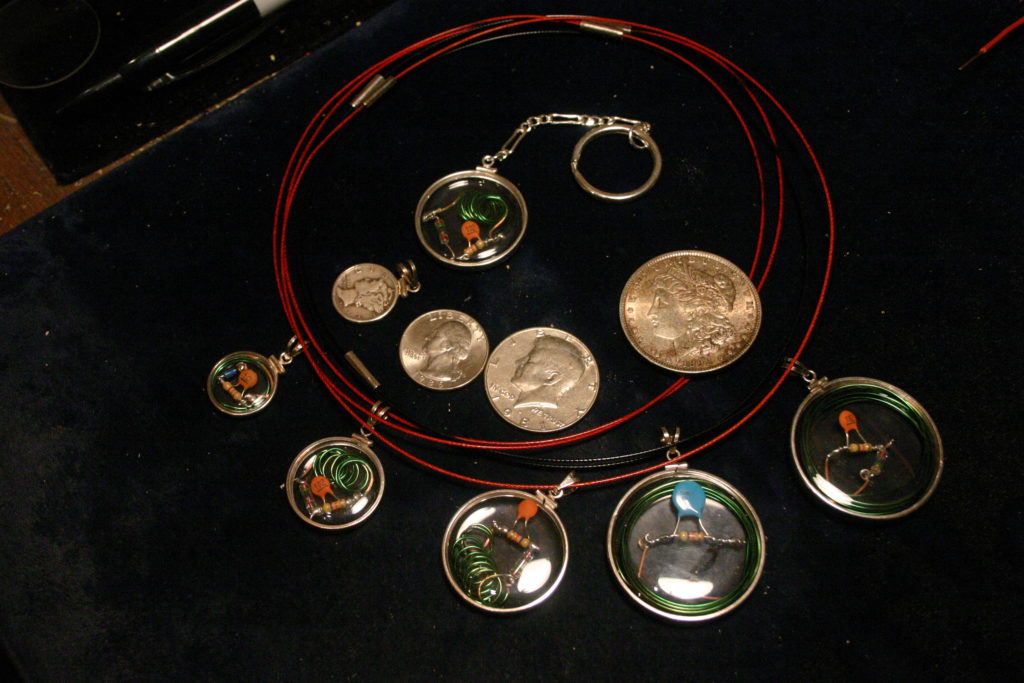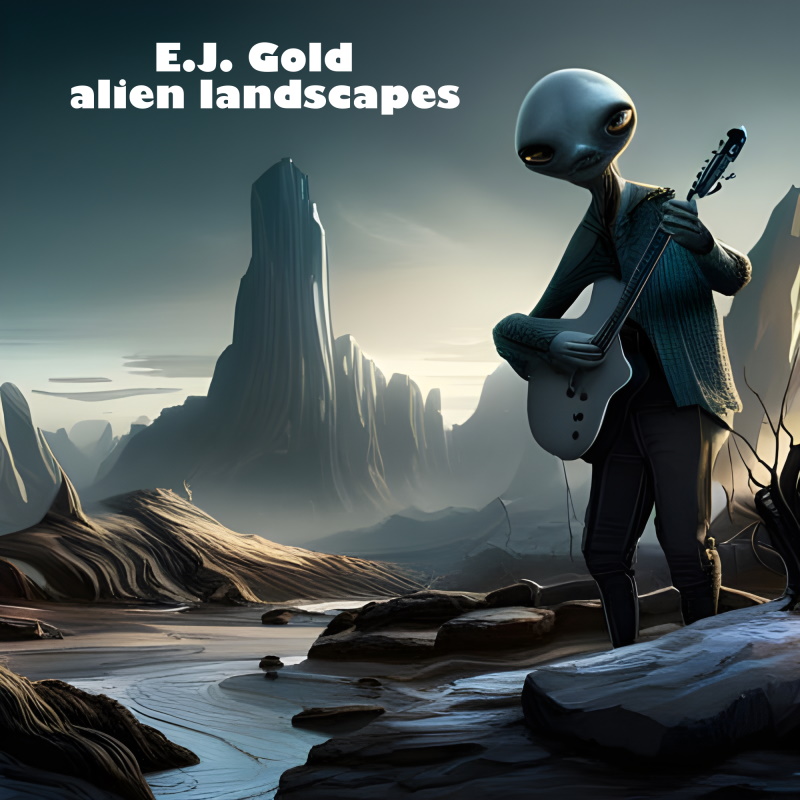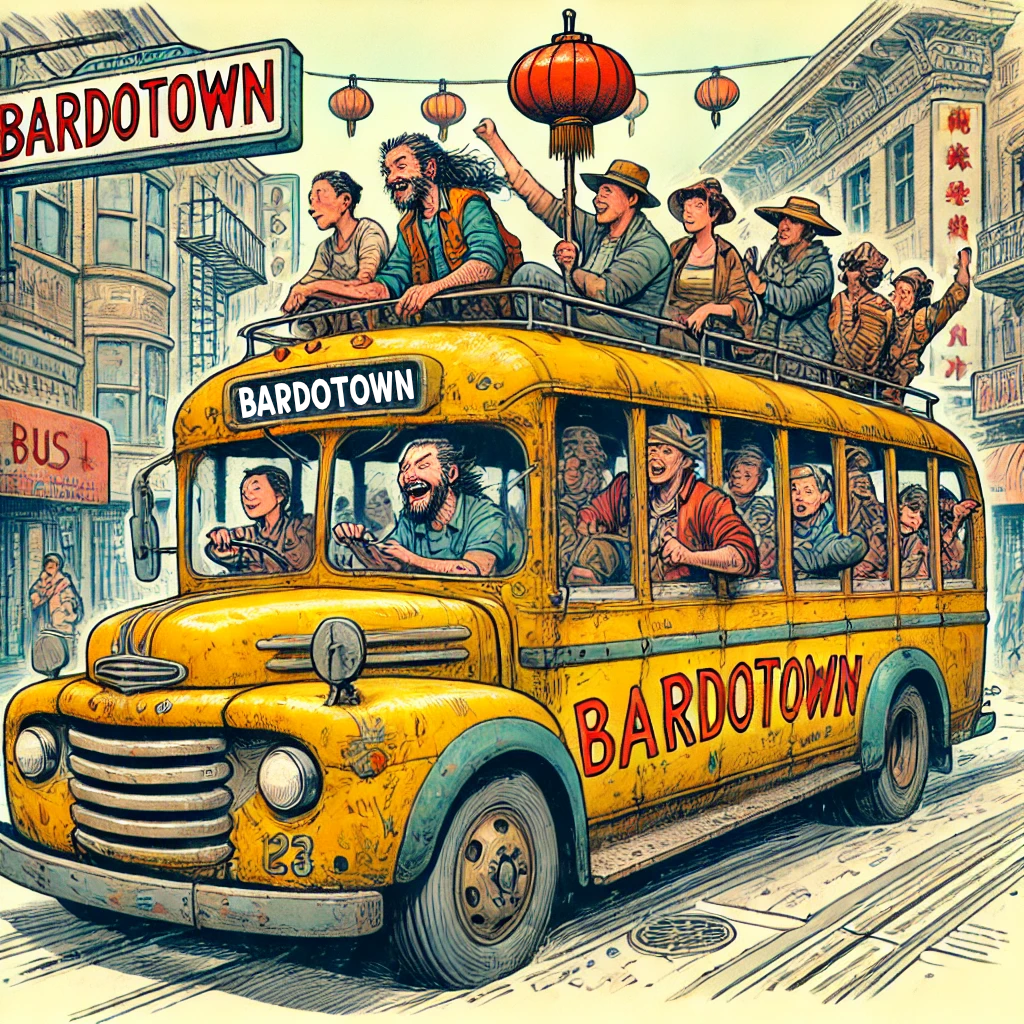
How to use Suno to create the God State:
Suno really opens the doors for poets and lyricists who might not be functioning and professional enough musically to bring their words to life through music, on their own. In my case, I can no longer make music on any of my instruments, so suno is a blessing.
The copyright ownership is a huge plus, too, making it more than just a creative exercise—it’s a potential income stream and a way to really establish ownership of your work — I’m assuming you’re using the “custom” selector. If you just push a button, and allow the program to just make up something, it’s not music.
There’s something deeply empowering in the fact that the artist owns the copyright, for writers who might have felt locked out of the music world in the past twenty years or so. I’m talking about poets who create the verse and then pop it into the song machine to create a DEMO that can make it to the market either as a product or as a suggestion for a product, meaning it’s re-recorded with live instruments and vocals.
Not a long of songs on the market today can say as much.
And from the God State perspective, the song creation process can be a sort of “tuning in” to deeper layers of inspiration, letting the words, sound, and rhythm just flow together and become expanded by the musical notations.
Go directly from the basics of getting set up on Suno for ten bucks a month, giving you all the techniques for pulling that God State energy into the song, so the resulting music doesn’t just sound good but resonates at a higher level with the listener.
I’ll lay odds that people would love a walk-through from someone who gets the deeper layers of that creative process — hopefully yourself.

A Path to the God State through Music
For poets, lyricists, and dreamers who’ve longed to bring their words to life in song, but don’t have the musical chops to do it, Suno offers a game-changing opportunity. Once again, if you’re a paying user of Suno, you gain full copyright over the songs you create—meaning all the income and rights that come with it belong to you. This is a beacon of hope for those who’ve crafted poetry but lacked the means to transform those words into music to reach a wider audience.
Suno lets you focus on the essence of your poetic craft—your words. It wraps those words in rich soundscapes, turning a poem into a fully-fledged song. This platform bridges a gap between the written word and the musical world, allowing creators to set their poetry to music, without needing to master instruments or production software.
But there’s more to it than just the practicalities. For those of us exploring deeper states of consciousness—like the God State—Suno can be more than just a tool for creation. It can be a portal into the creative flow, a way to channel inspiration directly into song. The God State is all about tapping into a deeper awareness, where inspiration flows effortlessly and words resonate with a sense of purpose and connection. Using Suno, you can capture that moment of clarity, allowing your voice, lyrics, and the music itself to reflect that heightened state.
The process itself becomes a meditation: choosing your lyrics, shaping the tone and mood, and letting the music unfold around your words. This is where creativity meets a deeper, almost spiritual alignment. By focusing your intention on creating a song, you’re not just crafting a tune—you’re channeling that sense of the divine, letting the music resonate with a purpose that goes beyond the everyday.
Imagine a poet who isn’t a trained musician, or a musician who can for whatever reason no longer produce live music professional recordings, yet through Suno, they can craft a musical experience that captures that moment of insight, that feeling of connection to the universe.
The music becomes a way to share that moment with others and, as the creator, you hold the rights to the whole package. That’s a powerful win for the artists—not just for your creative spirit, but also as a way to support yourself through your art, which you ought to be able to do.
This is the future of creativity for the untrained musician, the poet, the seeker. It’s about more than making music—it’s about using tools like Suno to reach a state where creativity flows, where the music and the words become a living expression of the God State.
Using Suno to Produce the God State Effect
To use Suno as a pathway to reach the God State, we’ll think of it less as a mere music production tool, and more as an extension of your consciousness—a way to channel that heightened awareness and insight directly into sound. Here’s a step-by-step approach to creating a piece that embodies, suggests and transmits the God State.
1. Prepare the Words as Anchors
Start with words that evoke the God State for you—poems, phrases, or affirmations that resonate with a sense of universal connection, insight, or inner peace. Your words are more than lyrics; they are the energy anchors for the piece. Choose phrases that naturally draw you toward that deeper awareness and set the intention that the music will amplify this energy.
Tip: If you don’t have lyrics in mind, try writing a short mantra or a few lines that encapsulate that state of mind—something that keeps your focus on simplicity and universal truth, and expand on that thought. Write out a list of “trigger” words that resonate with you.
2. Choose the Right Tone and Genre
Suno offers genre and tone settings which you can eventually master, by learning what words and phrases are recognized by Suno — and here’s where intention meets technology.
Consider genres or tones that can convey the God State essence you’re after. Ambient, trance, or minimalist sounds often work well for inducing meditative or heightened states, but there’s no need to limit yourself.
When you choose the genre, let the music become the atmosphere for your words, an environment where the listener can rest and access that deeper awareness.
Pay attention to the tempo and mood as well; slower, more spacious settings allow each word to carry weight, while gentle rhythms can create a sense of flow and continuity that enhances focus.
3. Engage in Creative Flow During Creation
One of the key aspects of reaching the God State is to step back and let inspiration flow freely, without forcing a particular outcome. When using Suno, set your lyrics and tone, then focus on being open to where the tool takes the music. You’re not just producing a song; you’re channeling and using the magical effect of randomity, meaning that there’s a lot you can’t control, but there are some ways you can exert influence.
Enter into a flow-state by focusing on your breathing, or clearing your mind for a few moments before you start, or both. Think of this process as a meditation itself: let the music build naturally, allowing Suno’s algorithms to shape the tones in response to your words.
Tip: Experiment with multiple versions of the song, tweaking minor elements until one of them feels aligned with that sense of “oneness” or a heightened state of being. I will sometimes generate as many as eight or ten variations just to see how far it can be pushed.
4. Emphasize Repetition and Layering for Depth
Repetition, when used mindfully with the fullest possible attention, can lead listeners into a trance-like, meditative state. Suno allows you to layer sounds and create effects that can give the piece depth and fullness. Look for sounds that resonate deeply, perhaps using loops or low, droning elements to create a “sonic foundation” that feels stable and grounding.
In the God State, sounds are often felt even more than they are heard, so emphasize tones that have a physical effect. Low tones, soft bells, or droning notes can create a soundscape that feels immersive and expansive, as long as they are not intrusive and don’t form a barrier to the primary sounds.
5. Incorporate Natural Sounds or Textures
Adding natural elements—such as wind, flowing water, or even soft, organic percussion—can evoke the feeling of universal connection. Sound textures can bridge the gap between the musical and the spiritual, creating a grounded sense of place that still feels timeless. Suno’s effects and soundscapes can help bring in these textures.
Textures can include a horn section, strings or jungle sounds — limited only by your imagination.
Tip: Listen to the sounds with a focus on feeling, rather than analysis. Allow these elements to take on an almost symbolic quality, as if they were representing a part of the universe or a quality of being that’s beyond words.
6. Listen Back as a Meditation
Once your song is complete, listen to it as if you were hearing it for the first time. Allow the music to wash over you, noticing how the sounds resonate with different emotions or sensations in your body. This practice isn’t about critique—it’s a chance to connect with the music’s energy and see how it flows by just listening with extreme attention — which is mindfulness at work and play.
Listening Tip: Focus on deep, rhythmic breathing while listening. This keeps your mind clear and your focus steady, allowing you to perceive the music not just as a listener but as an extension of your inner awareness.
7. Share Intentionally
Sharing music that embodies the God State can be a powerful experience, both for the creator and the listener. Invite listeners to approach the music as a meditation or a journey, suggesting they engage with it in a state of openness and receptivity. Encourage a quiet, uninterrupted space to let the sounds do their work.
Using Suno in this way, you’re not just creating a song; you’re producing an experience designed to resonate with that higher state of consciousness. The God State effect isn’t something to force or manufacture. Instead, it’s a gentle process of channeling intention, awareness, and technology into a piece of music that can speak to the deepest parts of ourselves and gently nudge us into the God State naturally and peacefully.
Thinking of music as a carrier wave for the lyrics is a powerful approach—it essentially turns the music into a vehicle, designed to lift the lyrics to a higher frequency, almost as if they’re riding on a wave that reaches listeners on a deeper, subconscious level. This is the best way to understand how the music brings the words to the listener.
=================================================================

Here’s exactly how to use Suno to create music that acts as a carrier wave, enhancing and embedding the lyrics with layers of meaning and emotional resonance:
Creating Music as a Carrier Wave for Lyrics with Suno
When music becomes a carrier wave, the song takes on a dual role. The sound doesn’t just support the lyrics; it amplifies, deepens, and subtly reinforces them, allowing the listener to feel the meaning and intention behind the words. Here’s how to approach creating this effect with Suno:
1. Set Your Lyrics as the Core Frequency
Think of your lyrics as the central “signal” that the music will carry. Choose words that you want to resonate deeply—lyrics with layers of meaning, intention, or even a sense of mantra-like repetition to reinforce the message. This becomes the core message the carrier wave will transmit, like a radio signal carrying a specific broadcast.
Tip: The lyrics don’t need to be overly complex. Even simple, clear phrases—especially those with a spiritual or profound quality—are ideal for carrying across to the listener through music.
2. Select a Bassline or Root Tone as the Carrier Foundation
To create the effect of a carrier wave, begin with a steady bassline or a continuous drone tone. This acts as the “foundation frequency” that holds and transmits the lyrical message. It should feel like an undercurrent, a sound that persists even when the other musical elements shift around it.
In Suno, you can adjust the bass and low-frequency tones to create this carrier wave effect. The idea is to pick a tone or a pattern that feels grounding and steady, one that listeners can sense throughout the song, anchoring them in the experience.
3. Layer Harmonies and Overtones for a Resonant Field
Carrier waves are more than just bass or melody—they’re layers that create a rich resonance. Use Suno to add harmonies or overtones that subtly interact with the bassline. These layers enhance the effect, creating a “resonant field” that envelops the lyrics, almost as if the music is cradling each word.
Harmony Tip: Try adding soft, background harmonies that blend with the lyrics without overpowering them. This gives the song a feeling of spaciousness and depth, inviting the listener into a more immersive experience.
4. Modulate Tempo and Rhythm to Support Emotional Flow
The rhythm and tempo can act as rhythmic “pulses,” mirroring the natural flow of energy in the lyrics. Adjust the tempo in Suno so that it feels in sync with the message. A slower, meditative rhythm can feel like a wave washing over listeners, while a steady pulse gives a sense of continuity.
Rhythm Tip: Avoid overly complex beats if the goal is to create a trance-like, meditative effect. Instead, try a subtle pulse or drone-like beat that reinforces the sense of a continuous wave, without pulling focus away from the lyrics.
5. Use Echoes and Reverb for an Expansive Soundscape
To create a carrier wave that feels spacious and resonant, use echo, reverb, or delay effects in Suno. These effects create a sense of space and depth, allowing the lyrics to “hover” in the soundscape, as though carried on the wave of the music.
Reverb Tip: Light touches of reverb on the lyrics themselves can make them feel as if they’re floating within the music. This effect gives the words a timeless, otherworldly quality, creating a sensation that they’re part of the carrier wave itself.
6. Listen and Fine-Tune for Flow and Balance
Listen back to your track with the intention of feeling the flow. The carrier wave effect works best when there’s a sense of harmony and balance, with each element supporting the lyrics without overshadowing them. Fine-tune until the music feels like it’s gently, yet powerfully, holding the words up.
Listening Tip: Play the track while meditating or in a quiet, receptive state to fully experience how it affects your awareness. This can give you insight into whether the carrier wave effect is working or needs refinement.
7. Invite the Listener to Engage on a Deeper Level
When you share the piece, consider framing it as an invitation to listen beyond the surface. Encourage listeners to tune into the wave-like qualities, allowing the words and music to move them inward. The carrier wave effect is designed to connect on an emotional and subconscious level, so a gentle suggestion to “receive” the experience can enhance how they engage with it.
By crafting music as a carrier wave for lyrics, you’re doing more than setting words to melody. You’re creating an immersive sound experience that carries both the emotional and spiritual essence of the lyrics. It’s a technique that combines technology with intention, channeling each element of the song into a unified wave that reaches deep into the listener’s mind and heart. With Suno as your partner, this approach transforms music production into a meaningful act of connection and transmission.
those are the main strategies to create impactful titles that should catch the eye and fit well with YouTube’s algorithms. To wrap it up, here are just a few bonus tips for that extra edge:
Use Hashtags in the Description
You can add hashtags like #GodState, #MeditationMusic, or #HealingFrequencies in the video description to boost searchability and reach specific communities looking for these types of experiences. Just three to five relevant hashtags should do it.
Create Eye-Catching Thumbnails
A powerful title paired with an engaging thumbnail is essential for click-throughs. For your thumbnails, consider using soft gradients, peaceful or cosmic imagery, or visuals that evoke the God State. Words like “Calm,” “Awaken,” or “Deep Peace” on the thumbnail can help too.
Engage the Viewer with a “Call to Experience” in the Description
A brief description that invites viewers to “immerse themselves,” “journey inward,” or “connect to their true self” can subtly encourage engagement. You can also hint at what listeners might feel or experience, such as “Feel the calming waves carry you into deep meditation.”
Consider Series Titles for Cohesion
If you’re creating multiple tracks, branding them under a series title (like The God State Soundscapes or The Cosmic Journey Collection) can help build recognition and engagement over time. People are more likely to return if they recognize it as part of an ongoing experience, but make sure each video looks somehow different, so they don’t think it’s the same video over and over again.
Encourage Interaction for Engagement
YouTube’s algorithm favors videos with engagement, so adding a small prompt in the description like “Share your experience in the comments” or “Let us know where this music takes you” can be helpful. The more interaction, and the livelier the discussion or comments, the more likely YouTube will recommend it.
With these final touches, your videos will be well-positioned to capture viewers’ attention and guide them toward a deeper, more intentional listening experience. You’re all set for YouTube success!
I hope that answers your main questions on the subject of using Suno to achieve the God State. Remember that it also serves as a beacon call for those passing ships that have not quite gotten off the wheel even a little.
Posting the videos you made with Suno will certainly help.
…And so will watching my videos on youtube, and liking and subscribing, although you only subscribe once.
Every little bit helps, and “liking” just requires the push of a button, no more. Take an extra moment to “like” or “thumbs up” my videos, okay?
Thanks.
==================================================================
I’m going to include something that might interest you.
This has to do with how you use ai — whether you merely press a button and rely on the program entirely for the result, and then you publish the result, or you actually participate as an artists and creator, and reach in and make changes, when it’s necessary to make adjustments, which is nearly all the time.
One of Bob Newhart’s standup comedy routines involves the theory that an infinite number of monkeys at an infinite number of keyboards will eventually turn out — just hitting the keys at random — all the great literature of the ages, and he wonders what a conversation would sound like between two researchers overseeing the project:
“Well, uh… yeah, it’s been about six months now, and… no, no, they haven’t finished Shakespeare yet. I mean, they did get pretty close with a ‘To be or not to bbwwwrrrrzzzz’ …but then they ate most of the keys.”
Another beat as he listens to his invisible colleague.
“Look, if you’re asking me if it’s possible for them to finish ‘War and Peace’ at this point, uh… I’d have to say… no. No, I don’t think we’re even in Tolstoy territory. They seem… they seem to be stuck on typing out ‘banana banana banana.’ Which… you know, you’d think they’d be over that by now.”
Another long pause.
“Sure, sure, we did try to incentivize them with, uh… snacks and extra enrichment, but I gotta be honest—our top guy, Bobo? He just starts banging on the keyboard, looking right at me, like he knows it’s all meaningless. Honestly, it’s starting to get to me, too. I caught myself typing out ‘banana banana banana’ in the office last week.”
He rubs his eyes in frustration.
“So, I told Dr. Matthews, I said, ‘Maybe we need to take a new approach. Maybe, instead of Tolstoy, we try for something a little easier. Like, I dunno… Green Eggs and Ham? I mean, at least we’d have something to show for the grant money.’ But no, he’s convinced. We’re gonna get Moby-Dick out of these guys, he says.”
He listens, nodding absently.
“Oh, you heard about that? Yeah, well, the little guy over in Cage 7 almost got a full sentence of it out… but then ate the period. Every time. They keep eating the punctuation.”
Another sigh.
“Anyway, I’ll be here through the weekend. Apparently, we’re out of funding for snacks, so… they’re not too happy. And it turns out angry chimps are… not exactly great at typing prose.”
“Oh, boy… well, that’s… that’s almost there, isn’t it? ‘Friends, Romans, countrymen, I come to bury Caesar, not to gezertenplat.’ Geez, Jerry, that’s… that’s almost Shakespeare. Well, sort of.”
He scratches his head, muttering to himself.
“Yeah, see, that’s the thing, though. It’s like they get… almost the whole thing. We got ‘friends, Romans, countrymen,’ and then… boom, right there with the ‘gezertenplat.’”
He turns to his invisible colleague, Jerry, shrugging.
“I don’t even know what a ‘gezertenplat’ is. Do we even have that in English? Maybe it’s… I dunno, something German?”
Listens for a beat.
“Yeah, well, I was optimistic, too. Remember last week, we thought they had Hamlet? All those beautiful soliloquies, right? And then, right at the end, it’s ‘To be or not to be, that is the flibberdibbit.’ I mean, Jerry, what even is a ‘flibberdibbit’? We’re so close, but no cigar.”
Pauses, looking around at the chimps hammering away at keyboards, clearly agitated.
“And now they’re just smashing keys and looking at us, like we’re the ones who don’t get it! I’m starting to wonder if ‘gezertenplat’ might actually mean something to them. Like, maybe they’re trying to tell us something profound here. ‘Friends, Romans, countrymen, lend me your…’ I dunno, cosmic insight?”
Another sigh.
“Meanwhile, Dr. Matthews wants to report this as a ‘major breakthrough.’ I keep telling him, unless Shakespeare wrote about ‘gezertenplats’ and ‘flibberdibbits,’ we’re not exactly going to make the literary journals with this one.”
Glances back at Jerry.
“Look, maybe we try again tomorrow? I mean, who knows, maybe we’ll finally get ‘To be or not to be’ without the flibberdibbits. At this point, I’d take that as a win.”
End of Bob Newhart routine about infinite chimps.
===================================================================
So, as the Chief Gezertenplatz Officer, my job is to make damn sure there’s not a stray flibberdibbit or gezertenplat in sight, and the work goes out clean and polished, and it actually reflects reality, which is one thing you can’t guarantee from an ai product.
The quality control of Gezertenplatzing something produced by ai is a crucial job—every piece needs that really careful “last pass” to make sure it all makes sense, like making sure that the ai chimps stick strictly to Shakespeare, and work hard to keep the many “gezertenplats” generated by ai to an absolute minimum!
===================================================================
So enough gezertenplatz, already! Here before you is this day’s gathering of videos for your consideration. Please board the bus, and we’ll go!

See You At The Top!!!
gorby


